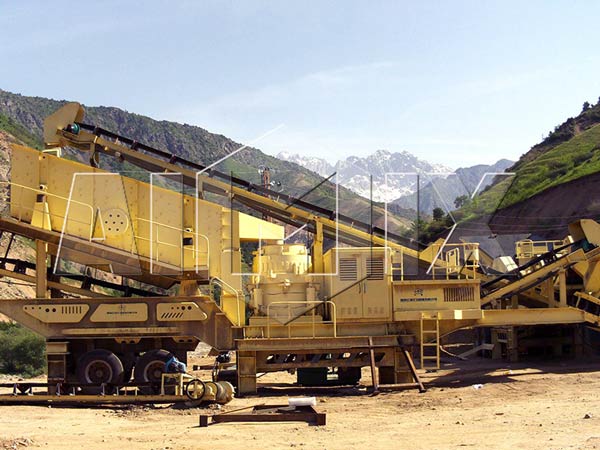Performance of your stone crusher plant is dependent upon the configuration in the production units. The use of impact and rolling compression helps to make the stone crusher plant develop a higher output with low power and noise level. A jaw crusher is a type of machine inside a stone crushing plant and might work with many different stones. The gap setting of this particular crusher determines its output size. A tighter gap setting brings about smaller output plus a lower throughput capacity.
Configuration of production units affects performance
The configuration of production units in the stone crusher plant affects the overall plant performance. Here is the outcome of an optimization procedure that involves the use of computerized reasoning to simulate the operation of any real plant. The model is used to shape agent degree information to the crushers and boost the final product gradation. Its use is discussed on this page and techniques to optimize the model are sketched.
Impact and rolling compression make the stone crusher plant yield an increased output by using a lower noise level and power consumption
The impact and rolling compression crushers(AIMIX productos) work in tandem to make the very best possible output with minimum noise and power consumption. Both impact and rolling compression produce equal amounts of pressure, causing a lower power consumption and noise level. The crushers are supposed to withstand a variety of abrasive surfaces and so are particularly efficient in the crushing of hard rocks.
 Gyratory crusher
Gyratory crusher
An excellent stone crusher can have several characteristics, including: its size, the amount of strokes a minute (strokes/min), along with the nip angle. The nip angle refers to the angle where the crushing chamber will open, that will figure out how many particles will likely be crushed per cycle. The space in between the plates of your crusher, often known as the OSS, determines how large a particle will be whenever it drops out from the crushing chamber.
Symons cone crusher
A Symons cone crusher can be a proven option for high-performance crushing. Its advanced hydraulic system allows it to function efficiently and reliably, letting you give attention to other matters that need attention. The cone crusher needs to be choke-fed for max efficiency and productivity, and it should be properly sized for optimal yield. It has to even be fed by having an appropriate circuitry, such as a hopper and feeder. A suitably-sized feed system reduces side loading and premature wear.
Gyratory crusher’s cavity profile
This paper presents a numerical style of the Performance of any Gyratory crusher plant, that has been created to simulate the behavior of the crushing plant. It uses a mix of a numerical and physical approach to solve the problem. Its results show the impact of operational parameters in the performance of the gyratory crusher. An assessment is created between the base case and also the non-uniform filling case. The results of simulations of varying open-side settings, rpm, and Bond’s equation are also presented.
Adequate screening capacity downstream of your crushing circuit
While many producers may wish to boost the tons each hour of material that may pass all over the screen, there are lots of methods to increase screening capacity(planta chancadora de agregados perú) without sacrificing efficiency. Screens are employed to separate aggregate material into sizes. According to the dimensions of the stone, the screens could possibly have several decks. Screening efficiency is improved by setting the screen’s parameters. A vibrating screen will work at its maximum capacity when it is properly adjusted.
Gyratory crusher’s CSS
The minimum safe closed side setting (CSS) for a gyratory crusher varies depending on the crushing machine, character of the feed, and choke-feed and regulated feed conditions. Smaller CSS settings than those published by manufacturers are sometimes possible, but are generally not considered good practice. Experimentation with smaller CSS settings must be then a detailed examination of power consumption.
Gyratory crusher’s feed gradation
A Gyratory crusher reduces how big rocks to a minimum dimensions of about ten to fifteen cm by compressing them. This technique reduces the dimensions of rock particles up to five to eight times. How big feed particles is controlled by gyratory’s setting. This particular crusher is normally equipped with hydraulic setting adjustment systems to manage the feed gradation and product size. In primary crushers, the gyratory is set as low as possible of 190 rpm. A secondary cone crusher operates at least of .75 gyratory setting.
Gyratory crusher’s operating principle
The Gyratory crusher’s operating principle in a stone crusher plant(plantas trituradoras de piedra) is nearly the same as those of a jaw or cone-type crusher. In a Gyratory crusher, the crushing head is big, along with the section of the discharge opening is directly proportional on the head diameter. The crushing chamber is deep and curved, providing a deep and acute crushing angle while maximizing capacity. The contour towards the bottom of your crushing chamber provides for various initial settings. Lower tier concaves are installed to obtain the desired setting and capacity.
Fote stone crusher plant
The Fote stone crusher plant’s performance is extremely reliant on its configuration. According to the size of the quarry, rock feed materials, and utilization of the last products, different plants might have vastly different layouts. The process of design is usually based upon connecting the production unit models. The input and output characteristics are analyzed in more detail. The layout of your crushing plant must include the sequence of product demand, the required product quality and cost, and operating costs.


Comments
February 7, 2023 04:27
Surprised with the information you provided, soccer random!